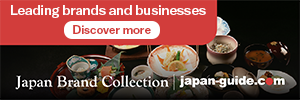Dear visitor, if you know the answer to this question, please post it. Thank you!
|
Note that this thread has not been updated in a long time, and its content might not be up-to-date anymore.
|
|
Seafood safety
|
2011/4/6 02:02
|
|
|
Hello,
I am travelling to Japan (Tokyo-Osaka) in May for 2 weeks.
I have evaluated the risk carefully and I am currently not very concerned about environmental radiation, blackouts, etc.
I am concerned about seafood with radioactive isotopes.
How exactly are the authorities check every shipment for radiation?
The 20 km no fishing zone seems like not enough. Tuna can swim up to 40 miles in a single day. Sure, the chances of getting a highly radioactive fish is very low but if the fish feed by Fukushima they could pick up a significant amount of the radioactive isotopes.
What about BLACK MARKET? Doesn't that exist in Japan. Isn't possible that banned foods may still end up in store and restaurants?
|
|
|
by Tomas (guest)
|
|
|
|
|
The authorities are checking the fish quite closely. So far, only one type of fish has been found that has a radioactivity level slightly above the very strict Japanese health levels, which means that it might become a health risk if you continued eating these fish regularly over a long period of time.
So, at this time, I believe that the risk of getting a highly contaminated fish whose single consumption leads to a health risk is close to zero. You are probably more likely to eat a fish that is contaminated by regular pollution, chemicals or a unhygienic chef.
However, the issue is still evolving. There is a risk that we might see a stronger impact on the fish than we have seen so far. However, considering that the rescue workers seem to be on their way of fixing the leaks, I personally am optimistic that this radioactive seawater will just be a temporary issue, and that the radioactive materials will soon all be diluted to a concentration where they don't pose a health threat.
|
|
|
by Uji
|
rate this post as useful
|
|
just facts
|
2011/4/6 22:26
|
|
Please refer to the following thread for updates on water and seafood up to the afternoon of April 4th. http://www.japan-guide.com/forum/quereadisplay.html?0+82329Right after that, it was announced that high radiation (4,080 becquerel per kilogram) was found from a tiny fish called "kounago" (Japanese sand lance) caught off-coast of Ibraki Pref. Because the Food Sanitation Law did not contain standards for radioactive iodine in fish and meat, health ministry officials established the same standards already applied for vegetables which is 2000 becquerel per kilo, quite strict. Chief Cabinet Secretary Edano announced on the 5th that seafood monitoring will be enhanced and the area of the monitoring will be spread. Fishery in the area has been encouraged to stop. Tonight's NHK TV news showed a few Ibaraki fishermen trying to go off shore but soon coming back as they heard that catch from Ibaraki is not being bought at the markets at all. The fishery industry is angry, and TEPCO met with them today to appologize. On a related note, days ago, a specialist said on NHK that seafood contamination comes later than seawater contamination, because it takes time for the fish to consume the contamination in the water. The best news today is that the big hole in the plant that was accidentally causing contaminated water to flood out was finally blocked. Now they are checking to see if there are any other holes, while trying to find space to transfer contaminated water that will eventually pile up inside the plant. Anti-nuclear-plant demonstrations are being scheduled all over Japan. I feel that honesty and accuracy is the best way to gain trust. As always, here are the sources of my comment and it's up to the reader to trust them or not. By the way, I haven't reduced the amount of seafood I buy or consume. http://www.asahi.com/english/TKY201104050198.htmlhttp://www3.nhk.or.jp/news/html/20110405/t10015116991000.htmlhttp://www3.nhk.or.jp/news/html/20110406/t10015139371000.htmlhttp://www.asahi.com/national/update/0406/TKY201104060084.htmlhttp://d.hatena.ne.jp/tea_67/20110402
|
|
|
by Uco (guest)
|
rate this post as useful
|
|
Follow-up: Bigger fish safe
|
2011/4/7 10:32
|
|
|
TV is doing their usual more-thorough-and-much-easier-to-understand follow-ups of the latest news on radiation issues.
This was what the NHK morning show ''Asa-ichi'' was saying two hours ago;
As suggested in the earlier days, fish contamination comes later than seawater contamination. So finally, high radiation was found from fish called ''kounago''.
Kounago are tiny fish that swim in the surface of the sea, feeding on plankton. The contamination is mainly on the surface of the sea, hence kounago was affected. Bigger fish will eventually eat the smaller contaminated fish, but at this point, all the bigger fish are most likely to be safe. Thorough and continuous monitoring will be the key to find contamination in the near future.
That was what they said.
By the way, along with information like these, we get to see the happier topics. Among many of them, this morning they were showing a charity event in Paris where artists of various fields performed to raise donation for the disaster while introducing some Japanese poems. Stuff like these are really encouraging to get our day going!
|
|
|
by Uco (guest)
|
rate this post as useful
|
|
Charity event
|
2011/4/7 12:29
|
|
|
Uco: we are going to a Charity Event for Japanese Red Cross on Saturday here in Melbourne: auction of Japanese arts and crafts; Japanese food and drinks; Japanese musicians: shamisen and drum recitals: can't wait!!!
|
|
|
by fmj
|
rate this post as useful
|
|
food chain
|
2011/4/19 13:01
|
|
|
What they did not tell you is that there is a concentration effect along the food chain. That is even though the radioactive substance in an individual small fish may not be harmful to human health, the radioactive stuff gets passed up the food chain as large fish needs to consume dozens of smaller creatures everyday to sustain itself, and as time passes the harmful stuff accumulates in the larger fish's body.
As you go up higher in the food chain, the concentration of harmful substance is higher.
That's how scientists have found very high levels of mercury in shark fins.
|
|
|
by Chris (guest)
|
rate this post as useful
|
|
|
But you forgot to mention that there is a significant difference in concentration ratio between the radioactive ingredient and mercury. When the sea water is 1, the concentration factor will be: Iodine : approx. 10 Cesium: 5-100 Mercury, PCB: 360-1,000,000 This is because unlike murcury, radioactive ingredients are discharged through gills and urine. The amount of cesium in the meat of fish falls to one half in approx. 50 days. With the current level of radioactive pollution, it is unlikely that the concentration in food chain actually happens, according to Professor Ishimaru, University of Marine Science and Technology. Source: http://mainichi.jp/select/weathernews/news/20110418ddm013040173000c.ht...(Article from Mainichi Shinbun in Japanese language)
|
|
|
by . (guest)
|
rate this post as useful
|
|
There is more than just fish
|
2011/4/21 01:47
|
|
|
As in any healthy diet, variety is the key. Eat seasonal, local products, which is very easy to do in Japan. In addition to small amounts of seafood, try fresh water fish. Japan has a great many different kinds of vegetables and you can find restaurants that feature vegetarian Temple Food. Japan is known worldwide for it's beef, Kobe and Hida beef are just two types to watch for. Black pork (kurobuta) is luscious. Noodles are widely available: udon, ramen, somen, soba, and Italian pasta. And of course, there is tofu and it's many offshoots, such as yuba and aburage.
You will eat well and have a fine time.
|
|
|
by SFO (guest)
|
rate this post as useful
|
reply to this thread

